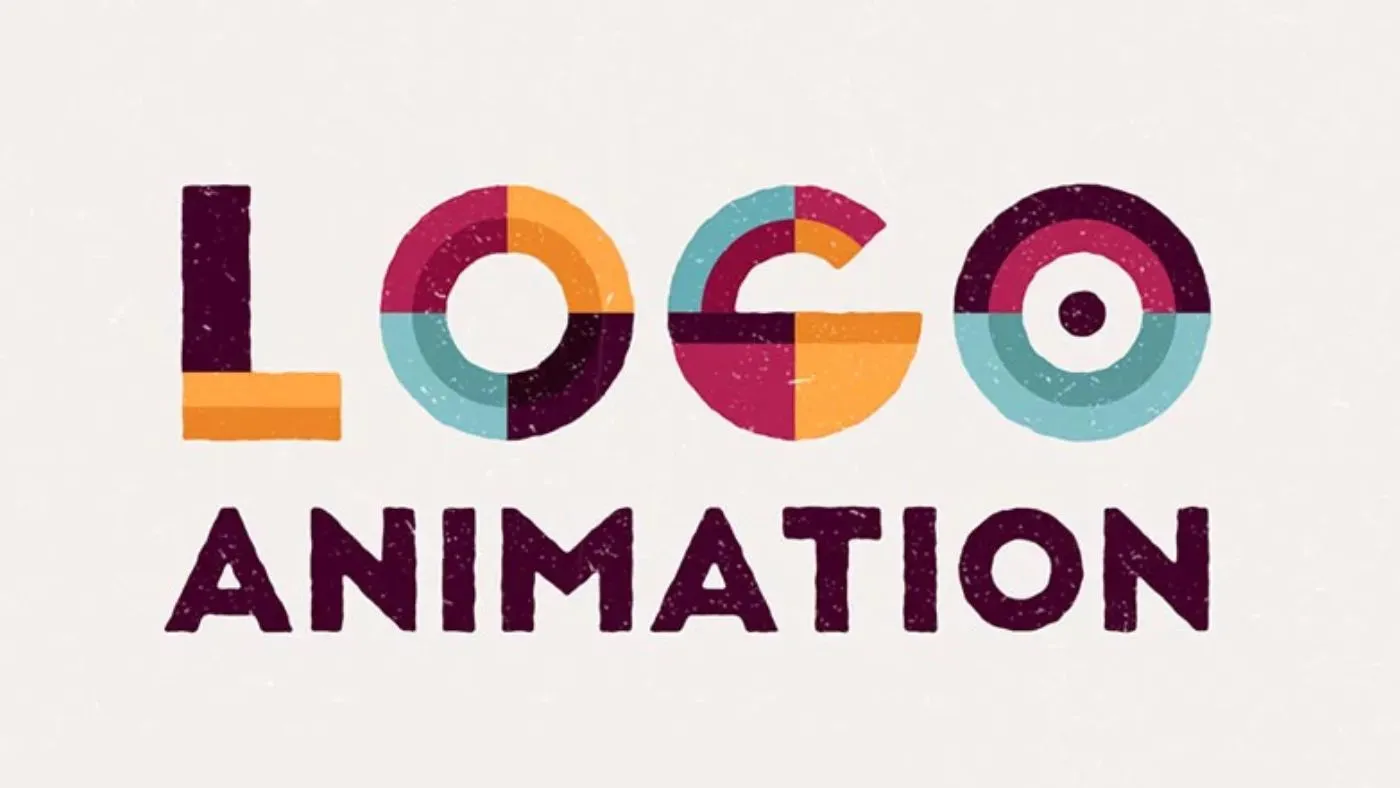In this blog, you’ll discover
• Why animated logos matter for brand impact
• Types of logo animations and their use cases
• A beginner’s guide to creating your own
• Tools, tips, and industry best practices
• Real-world places to use your animated logo for maximum visibility
A logo does not always work in a fast-scrolling digital world. Animation is your best friend in case you are willing to be memorable, to attract attention, and to be different. Animated logos have become a must-have for an effective branding tool utilized by such companies as Google, Disney, and Spotify.
You can be a solopreneur, a creative studio, or an enterprise brand, but the moment you introduce motion to your logo, you lift your visual identity.
Let us animate your brand, frame by frame.
Why Is It Worth Animating Your Logo
A well-designed animated logo is not only cool, but it also evokes feelings, improves memory, and creates a stronger brand experience. Here’s why
1. Instant Attention
Cartoon logos stimulate the visual processing and the motion processing parts of the brain at the same time. This dual hit creates a lot more difficulty in being overlooked in busy feeds or online spaces.
Research indicates that animated logos are 3 times more memorable compared to non-moving logos.
2. Improves Brand Recall
Human beings are programmed to recall movement. A waving flame, a jumping letter, or a blossoming shape is a micro-story that is much more memorable than a lifeless symbol.
3. Tells a Story Faster
In a matter of seconds of motion, you will be able to unveil the tone of your brand as fun, futuristic, minimal, bold, or luxurious, without uttering a single word.
4. Increases the Sense of Professionalism
Consider the Netflix signature of “tadum” or the glittering castle in the Disney logo. Animation creates a sense of trust and that your brand is professional and up to date.
The Most Common Animation Logos (Examples)
Various animation styles depict various messages. The selection should be made according to your industry, audience, and personality.
1. Fade-In/Reveal
An elegant and simple fade-in is achieved through a smooth fade-in, and this works best with clean and modern brands.
Apple and Nike use it.
2. Morphing/Transformation
A logo that changes or morphs into its final form brings about the feeling of curiosity and visual interest.
Mastercard and Slack use it.
3. Depth or 3D Rotation Effects
Gives a sense of sophistication and technology, and is commonly applied with app, game, and software branding.
Applied by BMW, Adobe
4. Bounce, Pop, or Wave Effects
Eye-catching, fun, playful, suitable for lifestyle or consumer brands.
Spotify, TikTok use it
5. Kinetic Typography
Animations based on text where texts are moved or animated. Good as a logo, slogan, or monogram.
Coca-Cola and HBO use it.
Step-by-Step Guide to Animation of Your Logo
Step 1: Get Your Logo Ready
- Scalability should be done using vector formats such as SVG, AI, or EPS.
- Cut unwanted detail, logos that are littered with small details can be messy when animated.
- Choose your animation objective: understated elegance or dramatic arrival?
Step 2: Select the Animation Approach
A. Online Tool DIY (Beginner-Friendly)
Drag-and-drop templates are available on platforms such as Renderforest, Canva Pro, and the logo animator of Vistaprint.
Pros
- Quick turnaround
- No design skills required
Cons
- Limited customization
- May be templated or generic
B. Intermediate to Advanced Animation Software
Take advantage of professional software such as Adobe After Effects, Blender, or Figma Smart Animate.
Pros
- Total control of creatives
- Industry-standard output
Cons
- Needs a learning curve
- Time-consuming for less experienced
C. Get an Expert
Hire independent motion designers or animation houses, such as Swift Animations, to achieve an original outcome.
Pros
- Brand-aligned animation
- Access to sound design, transition, and storytelling
Cons
- Higher cost
- The schedules of revision may differ
Step 3: Master Key Animation Principles
To give your logo animation a professional touch
- Timing & Easing: Don’t animate like a robot, don’t animate in a straight line. Apply acceleration and deceleration to give it a real-world physics.
- Consistency: Align your fonts, colors, and tone of your brand. Never create something that is not in line with your brand voice.
- Duration: Do not make it too long,3 to 5 seconds is ideal. Any more than that and you will be boring your viewer.
Best Practices of Logo Animation
You have done an animated logo or are planning to do one. Great! However, the movement is not enough to be successful. The way it is done and how it is put across can either break it or make it.
The four golden rules of logo animation are hereby presented in detail with real-life examples and practical insights.
1. Small Screen MobileFirst Design
Why It Matters?
Mobile traffic accounts for over 60 percent of web traffic. Failing to optimize your animated logo to fit in smaller screens will make it look blurry and slow to load, or just ineffective.
Key tips
- Make the file small: Export your animation as a compressed GIF, Lottie JSON, or MP4. The MOV video format should be avoided since it is large.
- Try across devices: What appears crisp on the desktop can appear dull on a mobile. iPhone, Android, and tablet preview.
- Scalable vector formats: Scalable vector formats, such as Lottie or SVG animations, enable high-quality visuals at any resolution and very small size.
Example
The Doodles created by Google are usually interactive and contain some movement, but they never take too long to load and work smoothly on mobile browsers. Their simplicity in design makes them render and respond quickly.
Pro Tip
Export animations as small Lottie files to be used in mobile apps and responsive web pages with the Bodymovin plugin for After Effects.
2. Less is More in Animation
Why It Matters?
Your logo is not the entire show; it is a symbol of your brand. Excessive use of effects, colors, or transitions will only make your animation too confusing or unprofessional.
Key Tips
- Consider micro interactions as a fade-in, a slight bounce, or a revelation.
- Coordinate all the movements with the energy of your brand. In the case of a law firm, employ a smooth transition. In a case of a kids’ toy brand, the pops or the swirls are more appropriate.
- Do not use more than 1 or 2 key effects. Less is more.
Example
The logo animation of Slack begins with a barely noticeable building of colored bars, which constitute its hashtag. It is imaginative, tidy, and on-brand, but not flashy.
Pro Tip
Consider how your animation aligns with your brand voice. When you are calm and professional in your brand personality, your logo should not be moving like a cartoon.
3. Loop Smoothly to Make it Seem Continuous
Why It Matters
- When your logo is used in looping situations, such as in a header on a website, on social media profile banners, loading screens, or digital kiosks, a jerky or awkward stop can undermine the user experience.
- The appearance of seamless looping. What seamless looping is. What seamless looping can be What seamless looping can do
- The animation is left in a position that leads itself back to its origin.
- The flow and the speed of the movement are constant through the loop.
- The viewers should not get the feeling that the loop is restarting; it must be endless.
Key Tips
- Design a loop-based system in the first place.
- Do not brake abruptly. Go through the transition using easing and continuity.
- Clean repetition can be guaranteed by using tools such as the LoopOut expression in After Effects or timeline-based editors.
Example
The seamless logo animations that Spotify employs in their branded looping graphics are a common thing in animated banner adverts or openers. The bouncing or pulse effect is carried out uninterrupted from a visual perspective.
Pro Tip
Although the logo may only need to be displayed once (such as a video intro), by designing it to loop, you will be able to reuse the logo later on more platforms.
Use Sound Strategically
Why it matters
While visuals catch the eye, sound captures emotion. Adding a brief, branded audio cue to your animated logo can enhance memorability, but it must be done tastefully.
Key Tips
• Use audio that complements your visual tempo and energy.
• Keep the sound under 2–3 seconds.
• Ensure it’s nonintrusive and doesn’t interfere with background music (if used in videos).
• Avoid loud or jarring sounds unless you’re a gaming or entertainment brand where such effects are intentional.
• Never autoplay sound on websites; it can annoy users and violate accessibility best practices.
Types of effective sound elements
• A soft chime, swoosh, or shimmer
• A vocal tag (like Intel’s “bong” tone)
• Rhythmic motion cues that match the visual transitions
Example
Netflix’s iconic “tadum” sound is instantly recognizable. It plays with their animated red “N” intro before movies or shows, signalling quality and brand identity, even before the content starts.
Pro Tip
If you’re serious about brand consistency, create a “sonic logo”, a custom audio tag that always pairs with your visual logo for intros, ads, and video content.
When executed right, these logo animation practices help your brand look modern, polished, and memorable, without overwhelming the viewer. Whether you’re designing in Canva, Adobe, or outsourcing to a studio, keeping these best practices front and center ensures your animation works on every platform and resonates with your audience.
Where to Use Your Animated Logo for Maximum Impact
When your logo is moving, then it is time to present it where it matters
1. Footer or Header of the website
You can make your animated logo an entry animation or even a loading screen to wow a visitor in the first few seconds.
2. Social Media & Advertisements
Looped animations in Instagram Reels, Facebook Ads, or TikTok videos can be much more effective in engagement and shares since they are short.
3. Video Content
Customize your YouTube channel, tutorials, or reels with animated intros that align with your brand.
4. Email Signatures
A simple animation logo on your email signature is professional and dynamic, and leaves an impression on people when they see it.
5. Pitch Decks & Digital PowerPoint Presentations
Begin with a bang. An opening animation that starts a slide deck creates credibility quickly.
Closing Thoughts: Your Logo Deserves to Move
A static logo says, “I exist.”
An animated logo says, “I’m here, I’m evolving, and I’m unforgettable.”
You do not have to be a motion designer to make your brand shine by using the right strategy and tools. All you require is a clear vision, some clever tools, or a good designer, and the will to present your story in motion.
At Swift Animation, we make your ideas come to life, one frame at a time. Our 2D animation services use a mix of artistic accuracy and strategic storytelling to create images that connect, communicate, and motivate. Need a brand animation, explainer video, or character-driven content? We customize each project to your unique voice. Let us make something that does not just move, but one that moves your audience. Ready to make your vision come alive?


